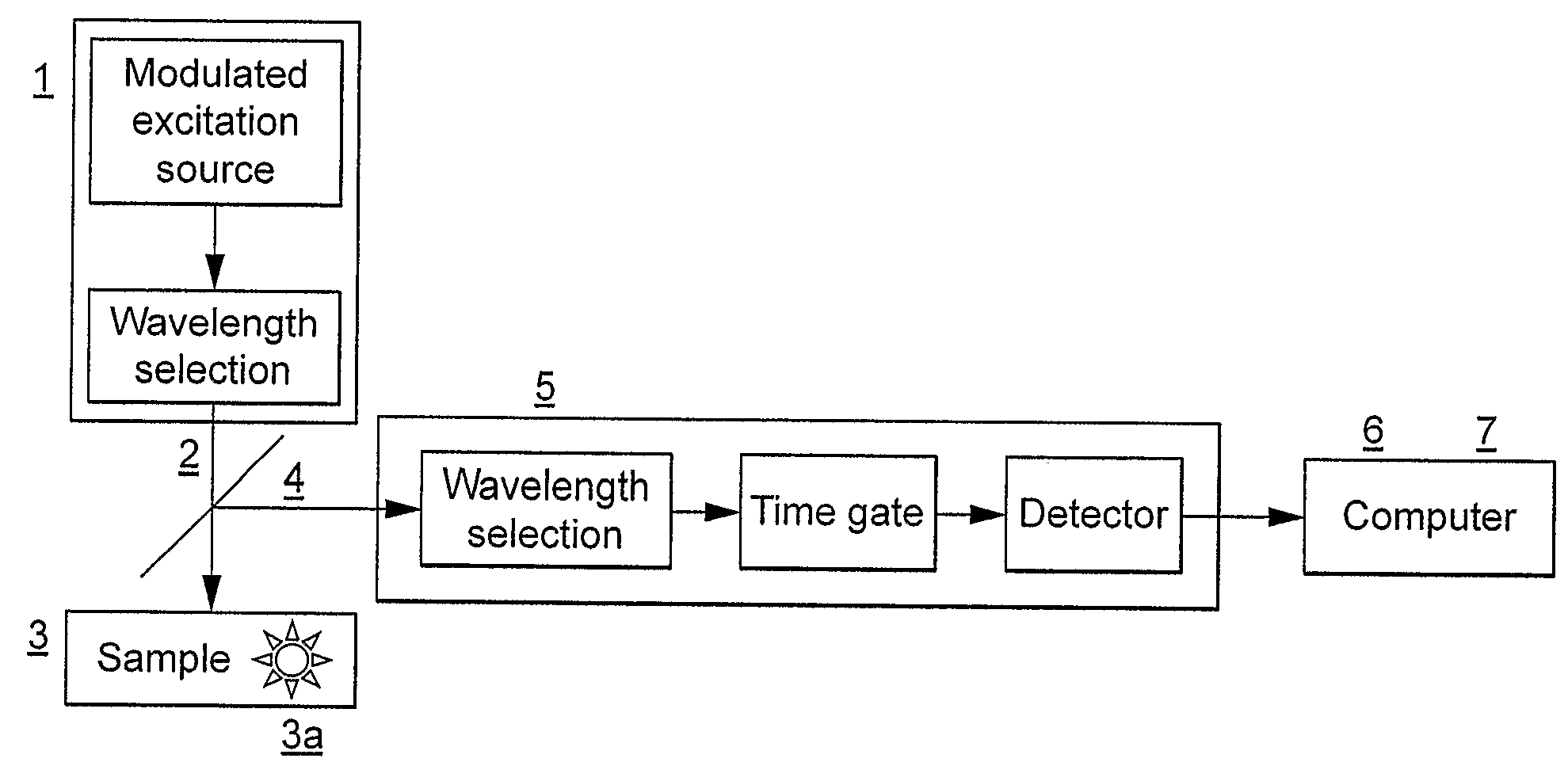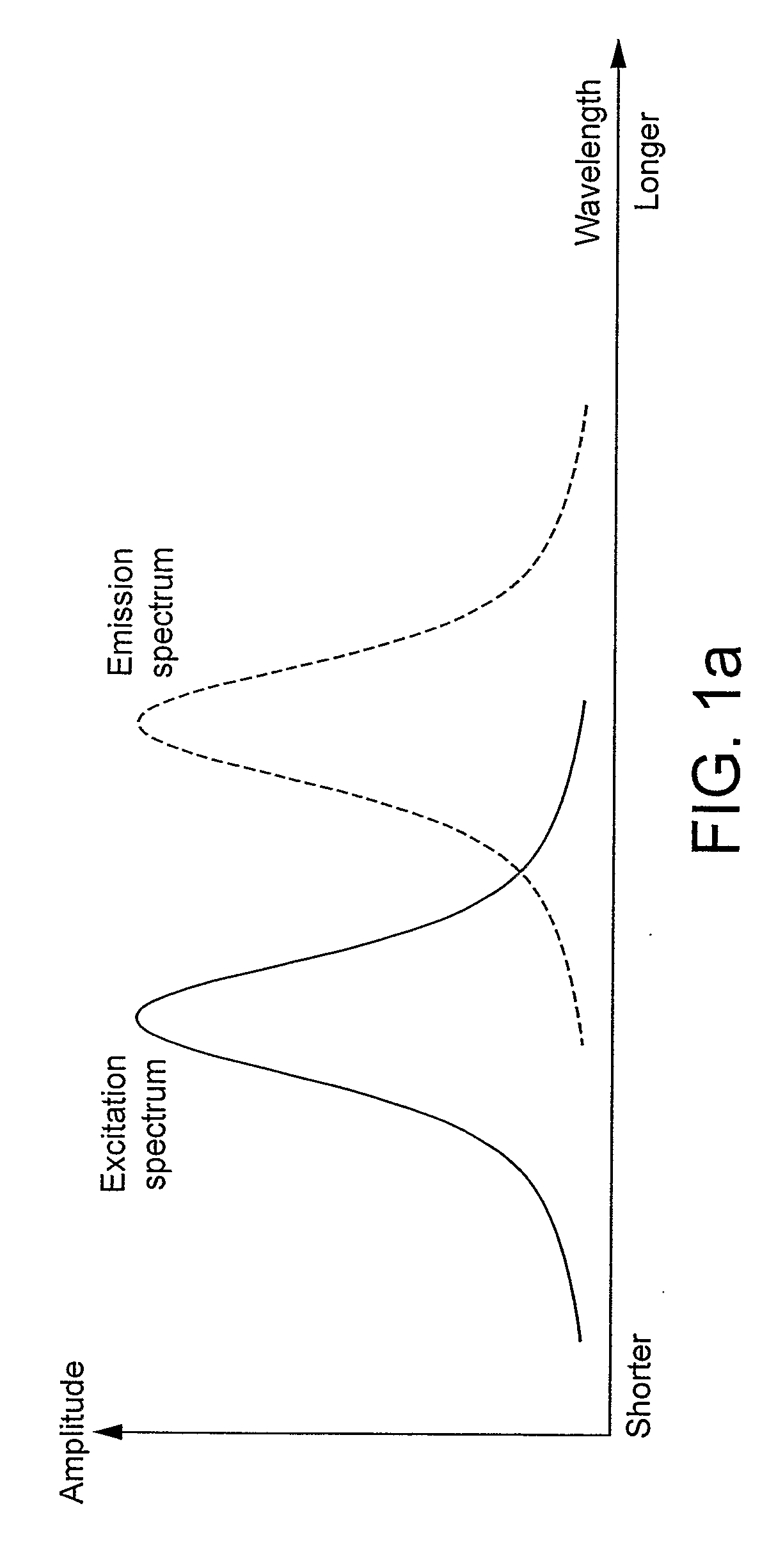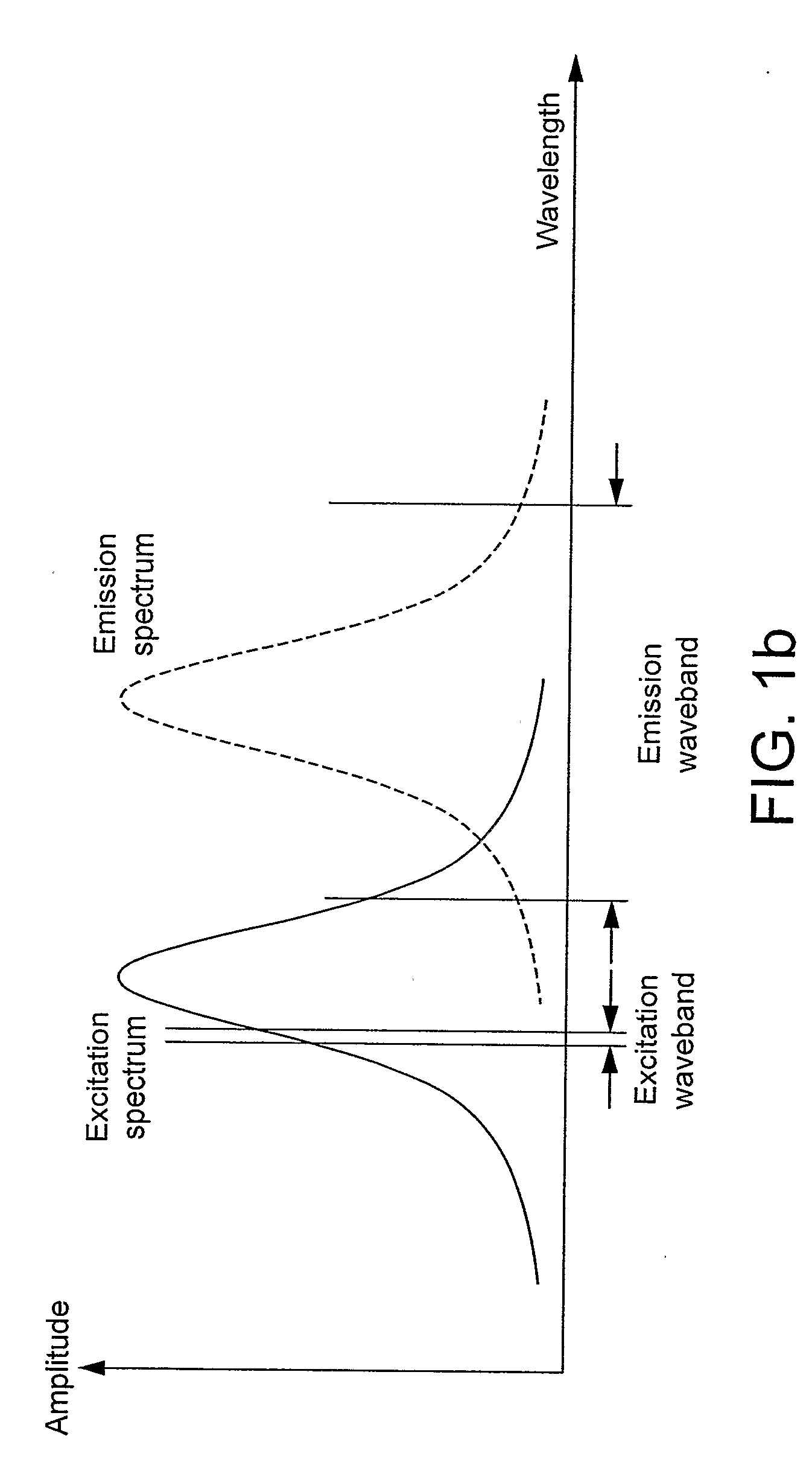Imaging of biological samples
- Summary
- Abstract
- Description
- Claims
- Application Information
AI Technical Summary
Benefits of technology
Problems solved by technology
Method used
Image
Examples
Embodiment Construction
[0057]An embodiment of the invention is presented by way of illustration in FIG. 6, where species A, B, C, D, E and F may be discriminated in the combined wavelength and lifetime domain employing the techniques described herein. A wavelength-only measurement would separate A / E / D from B / C / F but be unable to separate A from E from D, and likewise for B, C and F, while a lifetime-only would separate A / F from B / E from C / D, but again be unable to separate the between these pairs. In fact there is no combination of simple wavelength-only or lifetime-only way of distinguishing these 6 species.
[0058]The figure clearly shows the large area free to be populated by species allows much greater multiplexing (within limits of detection, time etc). This offers an improved signal to noise due to low background. Interfering auto-fluorescence typically appears in short lifetime region (<2 ns) and may be gated out. The detection can be extended by scanning excitation and / or emission wavelengths and po...
PUM
 Login to View More
Login to View More Abstract
Description
Claims
Application Information
 Login to View More
Login to View More - R&D
- Intellectual Property
- Life Sciences
- Materials
- Tech Scout
- Unparalleled Data Quality
- Higher Quality Content
- 60% Fewer Hallucinations
Browse by: Latest US Patents, China's latest patents, Technical Efficacy Thesaurus, Application Domain, Technology Topic, Popular Technical Reports.
© 2025 PatSnap. All rights reserved.Legal|Privacy policy|Modern Slavery Act Transparency Statement|Sitemap|About US| Contact US: help@patsnap.com



